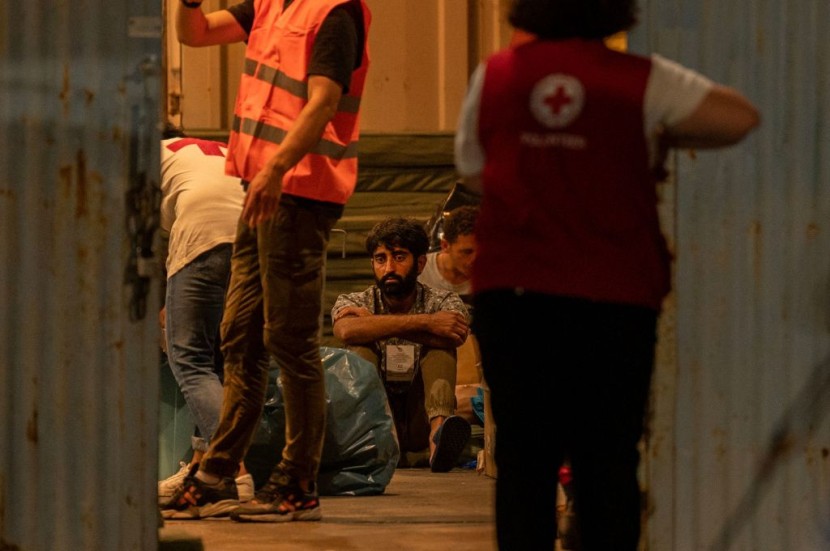
A task force of vessels from the Hellenic Coast Guard and Navy, as well as a handful of merchant vessels, aircraft, and drones are continuing its search, rescue, and retrieval operation off the coast of Kalamata overnight.
There are speculations as to how many people were crammed into the blue fishing vessel, but an aerial photograph released by the Hellenic Coast Guard showed scores of people covering every inch of its deck.
Acting Greek prime minister Ioannis Sarmas has declared a three-day mourning period for what can be considered as one of the worst disasters of its kind for 2023. He said the country's thoughts are "on all the victims of the ruthless smugglers who exploit human unhappiness."
Greek president Katernina Sakellaropoulou also visited some of the survivors Wednesday, saying the nation was "shocked" with what happened.
How Did the Boat Sank?
Meanwhile, coast guard spokesman Nikos Alexiou told Greek public broadcaster ERT TV it was impossible to accurately estimate the number of passengers on board the stricken vessel, but he alleged the 25- to 30-meter (80- to 100-foot) vessel capsized after people abruptly moved to one side, causing her to list heavily.
"The outer deck was full of people, and we presume that the interior [of the vessel] would also have been full," he said. "It looks as if there was a shift among the people who were crammed on board, and it capsized."
The Italian Coast Guard first alerted Greek authorities and the European Union's border protection agency Frontex about the approaching vessel as early as Tuesday.
The coast guard added its efforts to assist the boat were repeatedly turned down by its captain as the people on board insisted to have the vessel continue into Italy. The boat's engines failed at around 01:40 local time Wednesday (22:40 UTC Tuesday), and an hour later, the ship began to list abruptly from side to side before capsizing.
It only took 10 to 15 minutes for the vessel to disappear beneath the waves.
Survivors on Dry Land
According to Kalamata deputy mayor Ioannis Zafiropoulos, he was informed there were "more than 500 people" on board the ship.
Authorities earlier said 104 people were rescued after the vessel sank about 75 kilometers (45 miles) southwest of Greece's southern Peloponnese peninsula. Nearly all of the survivors were men.
Her last coordinates were close to the deepest part of the Mediterranean Sea, which is at around 17,000 feet (5,200 meters), making it difficult for rescuers to locate the vessel.
At least 25 survivors between the ages 16 and 49 were hospitalized due to hypothermia or fever.
Authorities Saw Passengers as Victims of Human Trafficking
Those who attempted to cross the Mediterranean into Europe were escaping the chaos in Libya in the aftermath of the toppling of the regime of its dictator Moammar Gadhafi in 2011.
It is alleged human traffickers took advantage of the chaos in Libya, making its northeastern coasts one of the main departure points for people attempting to reach Europe on unseaworthy smuggler's boats.
According to the UN's migration agency, the International Organization for Migration (IOM), the route from north Africa to Italy through the central Mediterranean is the deadliest in the world, despite the relevant proximity of Libya and Tunisia to the Italian island of Sicily. The IOM has recorded over 21,000 deaths and disappearances in the said area of water since 2014.








